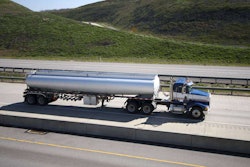Do you use any form of an electronic logbook in your operation?

An Overdrive survey from a year ago showed minimal e-logging by owner-operators. After that, many larger fleets added ELD systems to get a jump on compliance before Dec. 18, 2017, but some independent owner-operators have yet to install an ELD.
Since the Federal Motor Carrier Safety Administration’s late 2015 release of its final rule for using electronic logging devices, there’s been a rising swell of ELD development. Customers can choose from hardware and software options offered by dozens of vendors, many of them new to the trucking industry.
This also means serious preparation on the enforcement side. FMCSA has reported delays implementing its roadside data-transfer system by which officers will interface electronically with any of these systems. Nevertheless, the agency expected to have it in place prior to April 1, the Commercial Vehicle Safety Alliance’s scheduled enforcement date for using electronic logs.
Fleet-focused onboard devices offer a lot of bells and whistles, but independent owner-operators are likely to gravitate to a baseline-compliance device. They can benefit from additional functions such as IFTA data collection, making mileage tracking automatic and easily reportable.
As you’re making your decision, consider these issues:
SUPPORT.
The final rule specifies an eight-day timeframe for repairing/replacing a malfunctioning ELD. Does the provider stock the kind of hardware inventory to meet such a quick turnaround? How are replacements/repairs handled?
For carriers needing more than eight days to replace any ELD, the rule also spelled out a process for requesting more time. It involves contacting your state’s FMCSA division office and making your case.
Exemptions: Few beyond older engines
Perhaps the biggest exemption to FMCSA’s ELD requirement is the exclusion of trucks with 1999 and older model-year engines from complying.
Narrower exemptions exist for the following applications:
• Drivers in drive-away/tow-away operations, where the vehicle being driven is the commodity being delivered.
• Drivers operating under the timecard exception to the hours-recording rules – the 100- and 150-air-mile radius short-haul exceptions – exclusively.
• Drivers who occasionally keep a logbook but do not do so for more than eight days in any 30-day period.
• Agriculture and livestock haulers have until June 18 to adopt ELDs.
FMCSA REGISTRY AND COMPLIANCE.
Technically, compliant ELDs must be on FMCSA’s registry of devices. The agency’s vetting process does not entail testing for compliance, relying largely on manufacturers to self-certify that they meet the rule specs.
That’s prompted worry among motor carriers about what happens if their device is later found to be noncompliant. FMCSA’s website addresses that scenario: “FMCSA will work with affected motor carriers to establish a reasonable timeframe for replacing noncompliant devices.”
At this stage, part of the complexity involving the registry is that automatic onboard recording devices meeting fairly minimal requirements compared to ELD specs are essentially grandfathered through Dec. 16, 2019. The rule notes that any carrier installing an AOBRD prior to last year’s ELD enforcement date can use that device until the 2019 date.
Practically, what that means is that enforcing the requirement to use a registry-listed device is unlikely before that time, particularly for carriers who complied with the ELD rule and installed an engine-connected e-log prior to Dec. 18, 2017. So the registry’s importance for carriers choosing ELDs at this stage is minimal.
Some established ELD vendors remain off the registry. Those providers consulted for stories in this buyer’s guide, if not already on the registry, expressed plans for eventual ELD compliance for their products through firmware/software updates as the enforcement rollout progresses.
Nonetheless, for any product not listed on the registry, ask the vendor about its plans for registering its device and whether it has a plan for success and support for its product beyond 2019.













